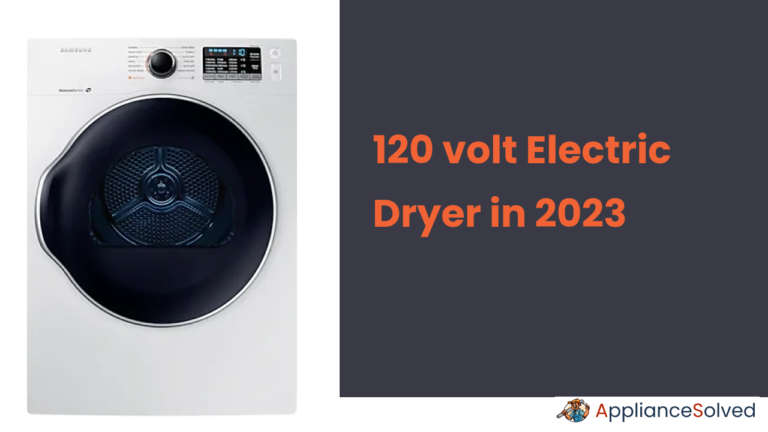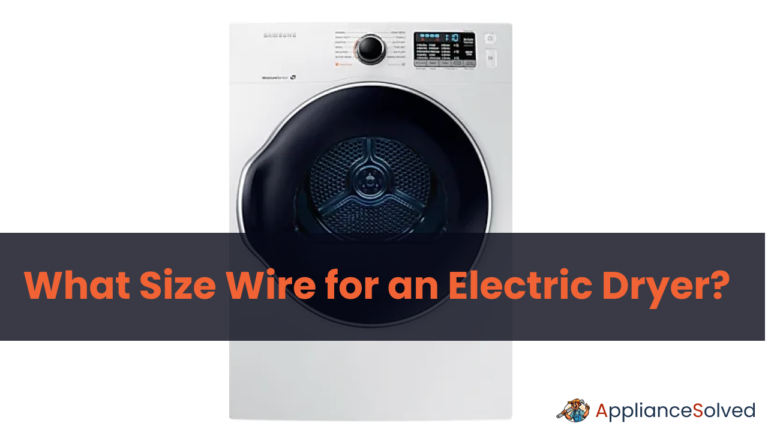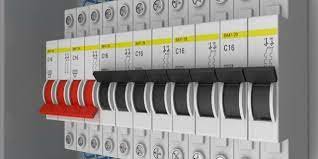Dryer Keeps Shutting Off: A Comprehensive Guide to Diagnosis and Repair
Introduction
A malfunctioning dryer that keeps shutting off prematurely can be a frustrating experience for homeowners. The inconvenience of incomplete drying cycles and the potential damage to drying clothes can lead to added stress. In this article, we’ll explore the common causes of dryer shutdowns, offer troubleshooting tips, and provide preventative measures to ensure uninterrupted drying.
Prompt diagnosis and repair are essential to avoid escalating issues and potential safety hazards. Let’s delve into the various reasons why your dryer might be shutting off unexpectedly. Read about How Long Is a Dryer Cycle guide.
What are the Common Causes of Dryer Shutdown?
A malfunctioning dryer that frequently shuts down can be attributed to various issues. Let’s explore some common causes that may lead to the premature shutdown of a dryer.
Overheating
Overheating occurs when the internal temperature of the dryer rises beyond the normal operating range, triggering safety mechanisms that shut down the appliance. This can result from a variety of factors.
Clogged Lint Trap
One prevalent cause is a clogged lint trap, restricting airflow and causing the dryer to overheat. Regularly cleaning the lint trap is a simple yet effective preventive measure.
Worn or Defective Belt
A worn or defective belt can slip, causing friction and triggering the overheating mechanism. Inspecting and replacing the belt when necessary is crucial for smooth dryer operation.
Faulty Motor
The motor, often subjected to wear with age, can overheat and result in shutdowns. Regular maintenance and prompt replacement can mitigate this issue.
Blocked Dryer Vent
Proper ventilation is essential for preventing overheating. Ensure the dryer vent is free of obstructions, allowing hot air to escape efficiently.
Overloaded Dryer
Exceeding the dryer’s capacity with an overload of laundry can strain the system, leading to overheating and automatic shutdowns.
What are the Moisture Sensor Issues?
Moisture sensors in a dryer are responsible for gauging the moisture levels in clothes to determine when the drying cycle is complete. Malfunctions in these sensors can lead to premature shutdowns.
Faulty Moisture Sensor
A malfunctioning moisture sensor may misinterpret moisture levels, causing the dryer to shut off prematurely. Regular cleaning and, if needed, professional repair can address this issue.
Dirty or Clogged Sensor
A dirty or clogged sensor may fail to function correctly. Periodic cleaning with a soft cloth and warm water is advisable to maintain sensor accuracy.
What is the Door Switch Malfunction?
The door switch in a dryer is a safety feature that detects whether the dryer door is closed. Malfunctions in this switch can lead to shutdowns as the dryer may not operate with an open door.
Broken Door Switch
If the door switch is broken, the dryer may not detect a closed door, leading to shutdowns. Visual inspection and testing with a multimeter can identify issues with the door switch.
Damaged Wiring or Loose Connections
Wiring issues or loose connections affecting the door switch can also cause malfunctions. Professional assistance may be necessary for repair or replacement.
What are the Other Possible Causes?
Faulty Thermostat
Malfunctioning thermostats can disrupt the drying process. Regular checks and timely replacement can prevent such issues.
Gas Valve Issues
In gas dryers, problems with the gas dryer shut off valve can contribute to shutdowns. Professional inspection and repair are crucial for gas dryer users. You can also check the gas dryer troubleshooting guide.
Control Board Problems
Issues with the control board can manifest as erratic behavior. Resetting the circuit breaker or power switch may resolve some control board-related problems.
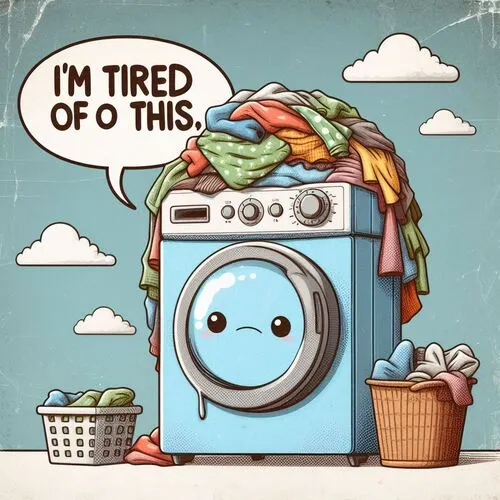
What are the Troubleshooting Tips for Each Cause?
One common issue faced by homeowners is a dryer that shuts off prematurely.This electric dryer troubleshooting guide aims to provide a comprehensive set of troubleshooting tips for various causes, offering insights into maintaining, diagnosing, and resolving problems related to dryer shutdowns.
What are the Troubleshooting Tips for Overheating?
Overheating is a prevalent issue that can lead to a dryer shutting off unexpectedly. To address this problem and ensure the smooth operation of your appliance, consider the following troubleshooting tips:
Lint Trap Maintenance
Regularly cleaning the lint trap is a crucial step in preventing overheating issues. After every drying cycle, take a moment to clear the lint trap of accumulated debris. This simple action ensures proper airflow and contributes to the overall efficiency of your dryer.
Belt Inspection
The dryer’s belt plays a vital role in its operation. Periodically inspect the belt for signs of wear or damage. If you notice any fraying or if the dryer shows indications of friction, it’s time to consider replacing the belt. This proactive approach can prevent unexpected shutdowns and extend the lifespan of your appliance.
Ventilation Check
Proper ventilation is essential for preventing overheating. Annually, or whenever you experience issues with your dryer, inspect the dryer vent for any obstructions. Ensuring unimpeded airflow helps maintain optimal operating temperatures, reducing the risk of premature shutdowns.
Load Management
Avoid overloading your dryer to prevent strain on the system. With every use, adhere to the recommended load capacity. This simple practice not only prevents overheating but also ensures thorough and efficient drying.
What are the Troubleshooting Tips for Moisture Sensor Issues?
Moisture sensors play a crucial role in modern dryers, ensuring clothes are dried efficiently without over-drying. When these sensors malfunction, it can lead to premature shutdowns and unsatisfactory drying results. Here are some troubleshooting tips to address Moisture Sensor Issues:
Cleaning the Sensor
Periodically cleaning the moisture sensor is essential for accurate readings. Using a soft cloth and warm water, gently clean the sensor to remove any accumulated residue. Regular sensor maintenance contributes to consistent drying performance.
Consult User Manual
For specific sensor cleaning instructions, refer to the user manual provided by the manufacturer. As needed, consult the manual to ensure you follow the recommended cleaning procedures. Manufacturers may provide valuable insights into maintaining optimal sensor functionality.
Professional Repair
If, despite your efforts, the moisture sensor continues to malfunction, consider seeking professional repair. Sometimes, complex issues require the expertise of trained technicians. Professional assistance ensures a thorough diagnosis and appropriate solutions to resolve persistent sensor problems.
What are the Troubleshooting Tips for Door Switch Malfunction?
The door switch is a critical component that ensures your dryer operates only when the door is securely closed. A malfunctioning door switch can lead to interruptions in the drying process. Here are troubleshooting tips to address Door Switch Malfunctions:
Visual Inspection
When faced with issues related to door detection, visually inspect the door switch. Look for visible damage or loose connections that may be affecting its functionality. Identifying and addressing these issues promptly can prevent disruptions in your drying cycles.
Multimeter Test
For a more precise assessment of the door switch’s functionality, use a multimeter to conduct a test. This diagnostic step can provide clarity when a visual inspection alone doesn’t reveal the source of the problem.
Professional Assistance
If DIY solutions fall short in resolving door switch malfunctions, seek professional assistance. Qualified appliance technicians have the expertise to diagnose and address issues related to the door switch, ensuring reliable and consistent dryer performance.
what are the Other Possible Causes?
Circuit Reset: When faced with erratic behavior from your dryer, consider resetting the circuit breaker or power switch. This simple step may resolve issues related to the control board or other electrical components. Regular resets can help maintain the overall functionality of your appliance.
User Manual Consultation: For troubleshooting steps beyond the scope of this guide, refer to the user manual. Manufacturers often provide specific instructions for various issues. Use the manual as a comprehensive resource to address problems not covered here.
Professional Technician: If DIY troubleshooting proves ineffective in resolving issues with your dryer, don’t hesitate to contact a qualified appliance technician. These professionals possess the knowledge and experience to diagnose complex problems accurately, ensuring effective and lasting repairs.
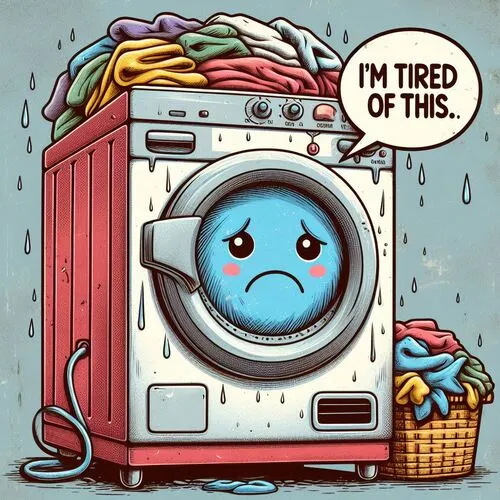
How to Prevent Future Shutdowns?
Proactive measures in the form of regular maintenance and proper usage can significantly contribute to preventing future dryer shutdowns. Let’s delve into the key aspects of maintaining and using your dryer to ensure its optimal performance.
Regular Maintenance
Lint Trap Cleaning: After every drying cycle, take a moment to clean the lint trap thoroughly. This simple yet crucial step helps in preventing the buildup of lint, ensuring unobstructed airflow and efficient drying.
Dryer Vent Maintenance: Annually, or as needed, conduct a comprehensive check and cleaning of the dryer vent. Clear any accumulated debris or obstructions to maintain proper ventilation and prevent overheating.
Moisture Sensor Care: Periodically, adhere to the manufacturer’s recommendations for caring for the moisture sensor. This may include gentle cleaning with a soft cloth and warm water, ensuring accurate readings during each drying cycle.
Proper Use
Load Management: To avoid overloading the dryer and potential strain on its components, follow the manufacturer’s guidelines for load capacity. Proper load management not only enhances drying efficiency but also extends the lifespan of the appliance.
Correct Drying Cycles: Select the appropriate drying cycle for different fabrics to ensure optimal results. Refer to the user manual for specific guidance on choosing the right settings for various types of laundry.
Ventilation: Create an environment that facilitates proper ventilation around and behind the dryer. Allow sufficient space for airflow to prevent overheating and ensure the efficient operation of the appliance.
By integrating these practices into your routine, you can contribute to the longevity and trouble-free operation of your dryer. Regular maintenance and mindful usage align with manufacturer recommendations, offering a proactive approach to preventing potential issues and the inconvenience of unexpected shutdowns.
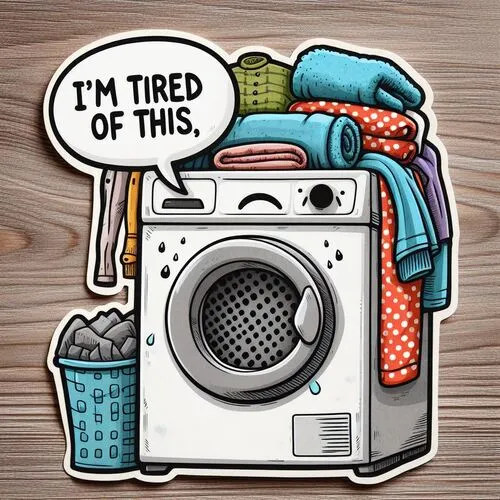
FAQ Dryer Keeps Shutting Off
How do you fix a dryer that keeps shutting off?
To address a dryer that keeps shutting off, follow these troubleshooting steps:
- Check for Overheating:
- Ensure the lint trap is clean and free of debris.
- Inspect the dryer vent for blockages and clear if necessary.
- Verify that the dryer is not overloaded, as excessive laundry can lead to overheating.
- Inspect Moisture Sensors:
- Clean the moisture sensors with a soft cloth and warm water to ensure accurate readings.
- Refer to the user manual for specific instructions on cleaning and maintaining moisture sensors.
- Examine the Door Switch:
- Check the door switch for visible damage or loose connections.
- Test the door switch with a multimeter to confirm proper functionality.
- Evaluate Other Components:
- Examine the belt for wear or damage and replace if necessary.
- Inspect the motor and thermostat for faults and replace any worn-out components.
- If issues persist, consult a qualified appliance technician for a comprehensive diagnosis.
Why does my dryer stop after a few minutes?
If your dryer stops after only a few minutes, consider the following possible causes:
- Overheating:
- Check for lint buildup in the lint trap and clean it.
- Ensure proper ventilation by examining the dryer vent for blockages.
- Avoid overloading the dryer to prevent overheating.
- Moisture Sensor Issues:
- Clean the moisture sensor to ensure accurate readings.
- Check for damage or malfunction in the moisture sensor and address as needed.
- Door Switch Malfunction:
- Inspect the door switch for visible damage or loose connections.
- Test the door switch with a multimeter to confirm functionality.
- Belt or Motor Problems:
- Examine the belt for wear or damage and replace if necessary.
- Check the motor for signs of overheating or malfunction.
Why is my dryer not staying on?
If your dryer is not staying on, consider these potential reasons:
- Door Switch Issues:
- Inspect the door switch for damage or loose connections.
- Test the door switch with a multimeter to confirm proper functioning.
- Timer or Control Board Problems:
- Check the timer and control board for faults.
- Reset the circuit breaker or power switch to address electrical issues.
- Belt or Motor Malfunctions:
- Examine the belt for wear or damage and replace if necessary.
- Inspect the motor for signs of overheating or malfunction.
- Overheating Safety Measures:
- Address overheating issues by cleaning the lint trap and ensuring proper ventilation.
- Avoid overloading the dryer to prevent overheating-triggered shutdowns.
Why is my dryer shutting off when it overheats?
If your dryer is shutting off due to overheating, take the following steps:
- Clean Lint Trap:
- Regularly clean the lint trap after each drying cycle to maintain proper airflow.
- Ventilation Check:
- Ensure the dryer vent is free of blockages and allows efficient air circulation.
- Avoid Overloading:
- Do not overload the dryer, as this can strain the system and contribute to overheating.
- Moisture Sensor Maintenance:
- Clean the moisture sensor with a soft cloth and warm water to prevent misreadings.
- Inspect Components:
- Check the belt and motor for wear or damage and replace if necessary.
- Address any issues with the thermostat or control board contributing to overheating.
Following these steps can help resolve overheating-related shutdowns and ensure the continued functionality of your dryer. If problems persist, consult a professional technician for a thorough assessment.
Conclusion
Dryer Keeps Shutting Off, a malfunctioning dryer that shuts off prematurely can be attributed to various causes, ranging from overheating to sensor malfunctions. Timely diagnosis and troubleshooting are key to resolving these issues and ensuring uninterrupted drying cycles.
Encourage readers to adopt regular maintenance practices, such as cleaning the lint trap and dryer vent, and to use the dryer correctly by avoiding overloading and following recommended guidelines. By taking proactive measures, homeowners can prevent future shutdowns and extend the lifespan of their dryers.
For further information and professional repair options, readers can refer to the user manual or contact qualified appliance technicians. Remember, a well-maintained and properly used dryer is essential for efficient and trouble-free laundry days.





